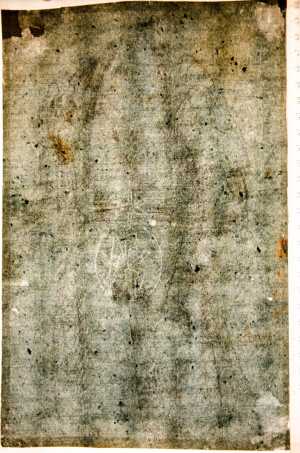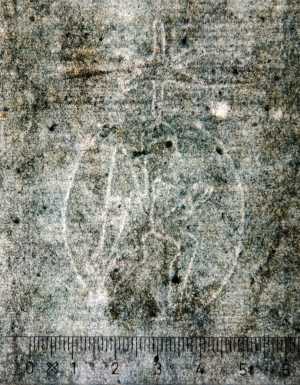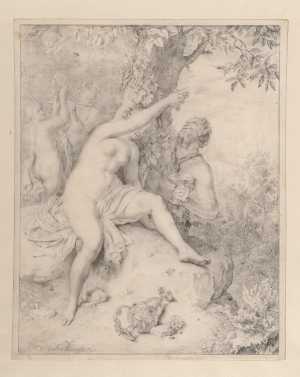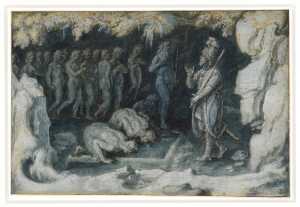Specifications
| Title | Study of a Standing Man |
|---|---|
| Material and technique | Black chalk, heightened with white, on blue paper (recto and verso) |
| Object type |
Drawing
> Two-dimensional object
> Art object
|
| Location | This object is in storage |
| Dimensions |
Height 286 mm Width 182 mm |
|---|---|
| Artists |
Workshop of:
Paolo Veronese (Paolo Caliari)
Previously attributed: Parrasio Michèli |
| Accession number | I 49 recto (PK) |
| Credits | Loan Stichting Museum Boijmans Van Beuningen (former Koenigs collection), 1940 |
| Department | Drawings & Prints |
| Acquisition date | 1940 |
| Creation date | in circa 1570-1580 |
| Watermark | Kneeling angel in an oval, with six-pointed star on top, broadly similar in type to Briquet 672 (Vicenza 1569) but these are much smaller. No kneeling variant is present in Piccard Online, but standing variants (w.o. DE5580-Codgraec302_125%2F128) dated circa 1580/1581, but they too are smaller. [see image] |
| Inscriptions | 'Agueta 61' (verso, below left, pen in brown ink) |
| Collector | Collector / Franz Koenigs |
| Mark | F.W. Koenigs (L.1023a) |
| Provenance | (?) Zaccaria Sagredo (1653-1729, L.2103a deest), Venice(Gottardo 2005); - ; Franz W. Koenigs (1881-1941, L.1023a), Haarlem, acquired in 1926 (Parrasio Micheli); D.G. van Beuningen (1877-1955), Rotterdam, acquired with the Koenigs Collection in 1940 and donated to Stichting Museum Boijmans Van Beuningen |
| Exhibitions | Venice/Florence 1985, no. 41; Rotterdam 2010 (coll 2 kw 6) |
| Internal exhibitions |
De Collectie Twee - wissel VI, Prenten & Tekeningen (2010) |
| Research |
Show research Italian Drawings 1400-1600 |
| Literature | Aikema/Meijer 1985, no. 41, ill. (Paolo Veronese?); Ruggeri 1985, p. 236; Gottardo 2005, pp. 246, 257 (Paolo Veronese); Meijer 2017, p. 10 no. 49 |
| Material | |
| Object | |
| Technique |
Highlight
> Painting technique
> Technique
> Material and technique
|
| Geographical origin | Italy > Southern Europe > Europe |
| Place of manufacture | Venice > Veneto region > Italy > Southern Europe > Europe |
Do you have corrections or additional information about this work? Please, send us a message

























